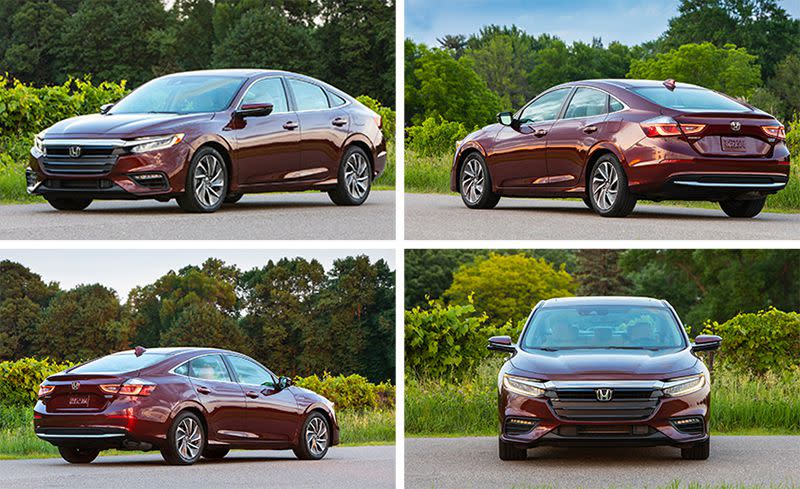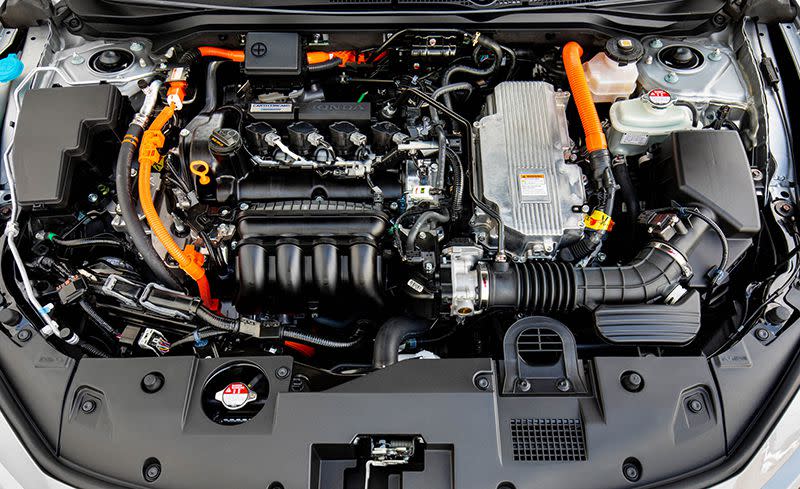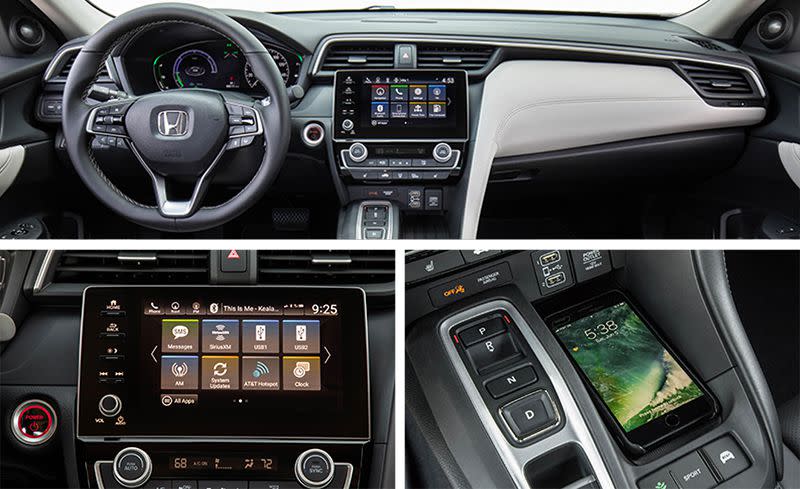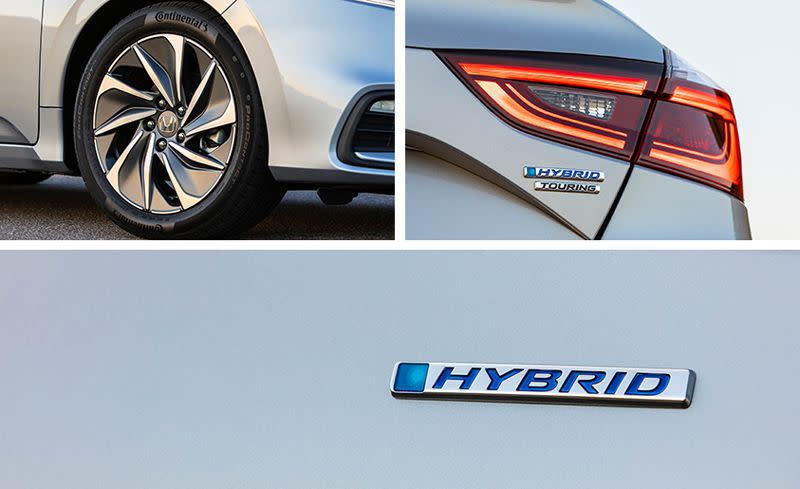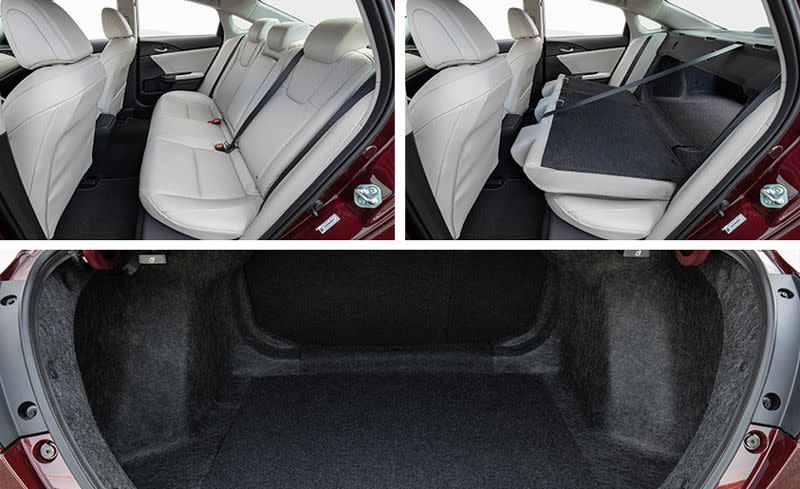The New Normal? We Drive the All-New Honda Insight
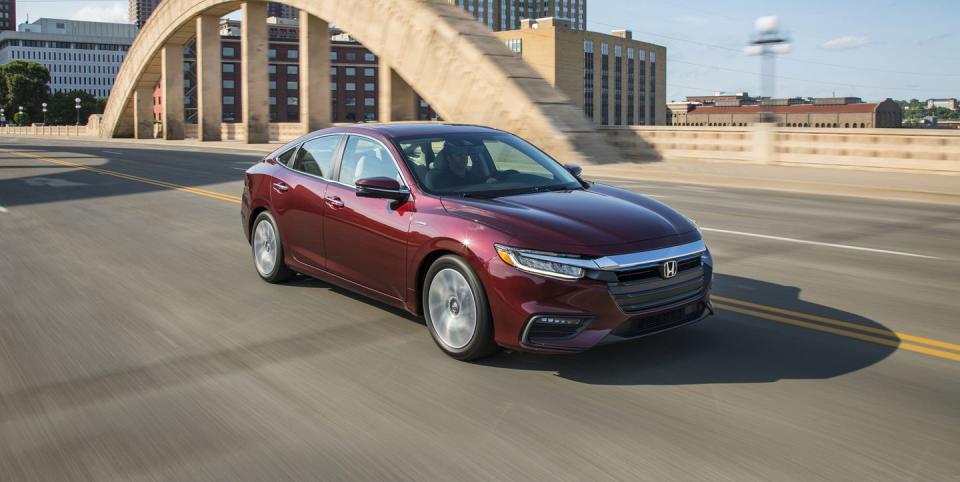
Do people even set out to buy “a hybrid” anymore? If you peek at the sales charts, it becomes quite clear that just being a hybrid-even one with instant name recognition like the Toyota Prius-isn’t enough in these times of fairly cheap gas. Indeed, many of the gas-electric models that are selling well are ones that don’t make a big deal about their powertrains and instead proffer their higher fuel-economy statistics without looking like some sort of alien space pod.
The pragmatically superior and conventionally crossovery Kia Niro, for instance, far outsells its higher-mpg Hyundai Ioniq platform-mate. And the Toyota RAV4 hybrid has outsold the Prius at times throughout 2018. For its new-for-2019 Insight, Honda isn’t choosing to spotlight only its hybrid pedigree and EPA fuel-economy ratings-which are as high as 52 mpg combined-instead focusing its pitch on the Insight being a quiet, comfortable, very well-equipped sedan that happens to carry some eye-popping efficiency numbers.
After a few attempts that were struck firmly from the oddball-hybrid mold-the original wheel-spatted Insight and the more recent CR-Z sports coupe, to name two-Honda is going a different route with the latest Insight, and your eyeballs will be thankful. The 2019 Honda Insight is loosely based on the Civic sedan and closely mimics that car’s measurements. But it’s a more graceful car inside and out than the Civic, with softer sheetmetal contouring, front and rear styling that fit better together as a cohesive whole, and an overall stance that sees it rival the Accord as Honda’s most attractive four-door. The interior, in fact, carries over the warm ambience of the current Accord sedan. Think of the Insight, then, as a Civic with any latent boy-racer genes purged from its DNA.
Same Two Motors, Different Engine
Honda essentially has taken the two-motor hybrid system that’s been used in the Accord hybrid for several years and adapted it for a smaller vehicle. Most of the hybrid system’s innards, including the clutch packs and electric motors themselves, are carried over directly. Whereas the 2018 Accord hybrid uses a 2.0-liter engine, however, the Insight gets an Atkinson-cycle 1.5-liter inline-four that makes 107 horsepower and 99 lb-ft of torque and which boasts an exemplary 40.5 percent thermal efficiency. This third-generation hybrid system uses a battery with slightly less capacity-1.1 kWh versus 1.3-and the traction motor is tuned for slightly less torque output, in this case 129 horsepower and 197 lb-ft, giving the Insight a combined output of 152 horsepower. (For reference, the Accord hybrid can muster 212 horses.)
Honda’s layout saves weight and space by skipping a conventional transmission completely. The traction motor is geared directly to the drive wheels and provides all of the low-speed propulsion. At moderate speeds and loads, the system works as a series hybrid with the gasoline engine turning a generator that, in conjunction with the battery, feeds power to the traction motor. Under low loads and moderate speeds, the gas engine is geared directly to the drive wheels, but if full load is requested, like say in a quarter-mile run, the engine is assisted by the traction motor and whatever charge is in the battery. Bottom line: The simplicity of the “no transmission” transmission is some of the craftiest engineering of late. Even though it debuted in the ’14 Accord hybrid, we’re still as impressed today as we were five years ago.
The 2019 Insight is a joy to drive around town. Because forward momentum primarily comes courtesy of an electric motor, there’s a near instantaneous response to any prod of the accelerator at urban speeds that puts more mechanically complex hybrid arrangements-those from Toyota or Hyundai, for instance-to shame. And at those speeds, even under moderate acceleration, the engine doesn’t need to rev much to keep up with the power demands. At lower speeds of up to roughly 20 mph, the Insight will go up to a mile without the gasoline engine firing up, according to Honda. Pressing the EV mode button prioritizes engine-off operation momentarily but at the expense of overall mpg, as the engine will have to do more energy generation later.
The Insight is also genial on the highway, provided you stay light on the accelerator; it’s at these speeds when the gasoline engine is mechanically clutched to the wheels and the traction motor tags in and out judiciously. While viewing the power-flow display, we saw this mode engage in various steady-speed conditions at about 40 mph and above, to a maximum of 81 mph in ideal conditions. However, the tables turn if you’re not maintaining a steady speed, at which point the engine can struggle to respond to nudges (or inclines) and emit a coarse, unpleasant drone. A strong detent about three-fourths of the way through the accelerator pedal’s travel aims to keep you out of that particularly raucous region.
In addition, the vibration of the engine can be felt a little too prominently through the floor and steering wheel. The four-cylinder doesn’t stay on much when the car is stationary if you’re not drawing heavily on, say, the air conditioning, but when we were at a stop in hot weather, the idle on our preproduction cars felt surprisingly lumpy. This could be due to the fact that it’s loaded by the generator motor whenever it’s on.
Not Really a Sporty Car-But It Has a Sport Mode
Sport mode, which honestly feels a little out of character given the philosophy of this sedan, really cranks up the sensitivity of the accelerator pedal and somewhat alters the power source-so, more from the battery versus the generator-for maximum punch. A tug of the left steering-wheel paddle orders up more regenerative braking in three steps, the most aggressive of which is nothing close to the one-pedal driving that some EV fans prefer, but it approximates the Prius’s B mode.
It may be that the engine seems loud at times because Honda has done a great job mitigating road noise. Measures taken include the liberal use of acoustically insulating glass, additional noise insulation versus the Civic, and structural changes said to focus on noise and ride quality. Indeed, the Insight’s cabin can be luxury-car quiet. Active Noise Control uses the audio system’s speakers to further temper road noise; it also will supplement the engine noise in Sport mode, a difference that can be clearly heard when driving more aggressively.
The Insight has an electrically assisted steering system with a variable-ratio rack, just like the Civic-and with the same 35.7-foot turning circle-but it has a more relaxed overall feel. The brake pedal is reassuring and firm, with great brake blending between the friction brakes and the electric motor’s controlled drag effect in the final feet of gentle stops, something hybrids don’t always get right. Every Insight rides on a suspension consisting of struts up front and a multilink setup out back, and all have front and rear anti-roll bars. To help tamp road vibration they include fluid-filled compliance bushings in front; Touring models also get them in back. In a very brief drive in an LX trim on some of the same roads we traveled in a Touring model, the LX displayed less impact harshness-probably because of its taller-sidewall tires-but was more susceptible to vertical motions over heaves.
A Little More Confining than Other Compacts
As in the Civic, anyone six feet or taller will want to pay close attention to headroom. The front seats are more comfortable for the long-legged in the Touring, as the lower cushions adjust for tilt, but the Touring also includes a sunroof that cuts into headroom. Likewise, the back seat has plenty of legroom, but headroom is more limited than in other sedans this size. Thankfully, there are no sacrifices for the sake of hybrid packaging; a large trunk with a flat floor, a rear-seat pass-through, and folding seatbacks (a 60/40 split on EX and Touring models) assure plenty of flexibility.
The Insight EX and Touring have essentially the same 8.0-inch infotainment system as the new Accord, with integrated Apple CarPlay and Android Auto plus satellite and HD radio, two USB ports, and a volume knob. Touring models add navigation, HD digital traffic, voice recognition, and a 450-watt audio system with 10 speakers, plus available HondaLink cloud-based services. Base LX models get a 5.0-inch screen with Bluetooth audio streaming, Pandora integration, and a 140-watt audio system with six speakers. Against a comparable Civic sedan, the Insight is several thousand dollars more expensive, but it’s also a lot nicer inside, and with its extra amenities and features the hybrid fosters less dollars-and-cents obsession over whether the additional cost will pencil in the long run.
Honda aims to make electrified vehicles two thirds of its global sales by 2030. The United States will play a large role, Honda says, and hybrids will be a big piece of that pie. Although such ambitions may have seemed like a stretch in the past, the Insight shows us how Honda just might achieve its target-by hooking shoppers with the car, not just the numbers.
You Might Also Like

 Yahoo Finance
Yahoo Finance 